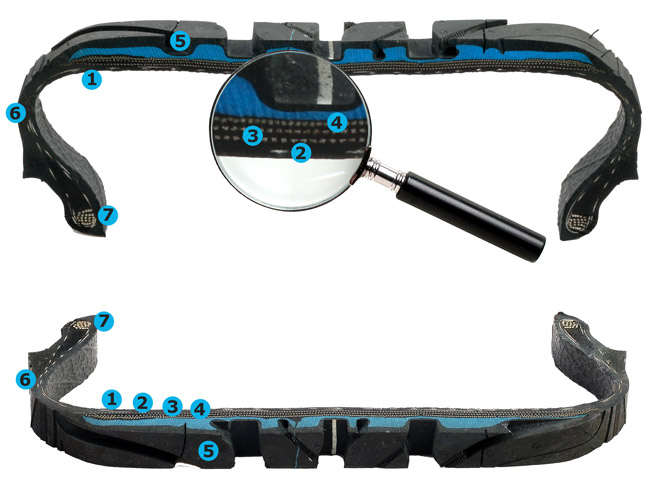How a tire is constructed
Tires. They're wonderful things, all black, round and pretty. Many people believe a tire to be a simple rubber creation which pops out of a mould and onto your wheel but in reality, the modern radial tire is a complex piece of engineering.To help you understand just how many layers there are to the modern tire, below is a cut away of our example tire, a Goodyear Optigrip. Currently this is one of the latest tires to market and uses a unique dual compound construction to improve longevity and performance over the life cycle.

1. The inner tire. This is the tire's version of an inner tube and stops air escaping. Usually constructed from a simple rubber.
2. The casing ply. These are fine cords, usually made from aramid fibres such as Twaron and Kevlar. These are laid in straight lines and sandwiched in rubber. The cords are key to the tires construction, providing shape and strength to the tire.
3. Bracing ply. The bracing ply is usually constructed of a very fine steel cord in a rubber sandwich. Two or more plies are stuck together across the tread, at opposing angles of around 60 degrees. When the tire is cooked (cured) the opposing steel cords form triangles which keep the tire rigid. The formation of this structure is key to the tires characteristics as they have to be strong enough to resist the forces generated by driving but supple enough to absorb lumps and bumps in the road. To make this work, steel has to be bonded with rubber which is a very difficult process
4. Safety ply. This cord keeps the tire in shape at speed and reduces the effect of friction heating.
5. Tread. This is the top layer of the tire we all know. Not only does the rubber have to be soft enough to generate grip by "keying" into the road and clearing water, but it also needs to ensure it doesn't heat up too much to avoid unnecessary wear. In the example tire the blue layer is a softer compound rubber, designed to ensure the tires grip stays constant as the tread wears away.
6. The shoulder / sidewall. Moving round to the side of the tires these further help absorb bumps and give the tire it's turn in characteristics.
7. The bead. The bead is where the tire joins the rim.
Hopefully you can now appreciate just how complex the modern tire is. If you'd like to ask any questions please leave a comment below.







